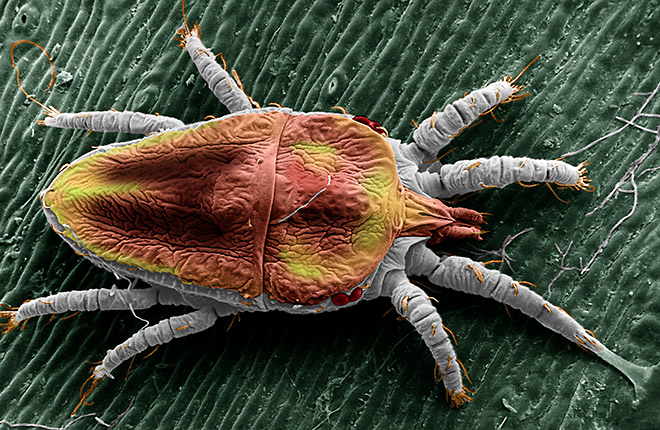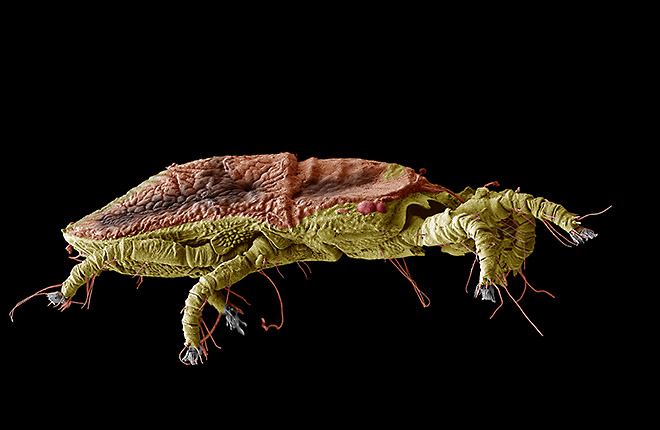
Using a scanning electron microscope, ARS geneticist Gary Bauchan, entomologist Ron Ochoa, plant pathologist John Hartung, and visiting scientist Gabriel Otero Colena study the flat mite Brevipalpus yothersi, which carries the citrus leprosis virus. (Stephen Ausmus, D3662-1)

The citrus leprosis mite, Brevipalpus yothersi, carries the cytoplasmatic citrus leprosis virus. (Electron and Confocal Microscopy Unit, D3672-1)

Lateral view of the flat mite that carries the cytoplasmatic citrus leprosis virus, Brevipalpus yothersi. (Electron and Confocal Microscopy Unit, D3673-1)

The front pair of legs of the citrus leprosis mite, Brevipalpus yothersi. The white tenent hairs are for walking. The pink, baseball bat-shaped projections are modified setae. The long, single white setae are sensory organs. (Electron and Confocal Microscopy Unit, D3674-1)

The Brevipalpus phoenicis mite is actually associated with palm trees. This flat mite is often incorrectly identified as the flat mite Brevipalpus yothersi, carrier of the citrus leprosis virus. (Electron and Confocal Microscopy Unit, D3675-1)






